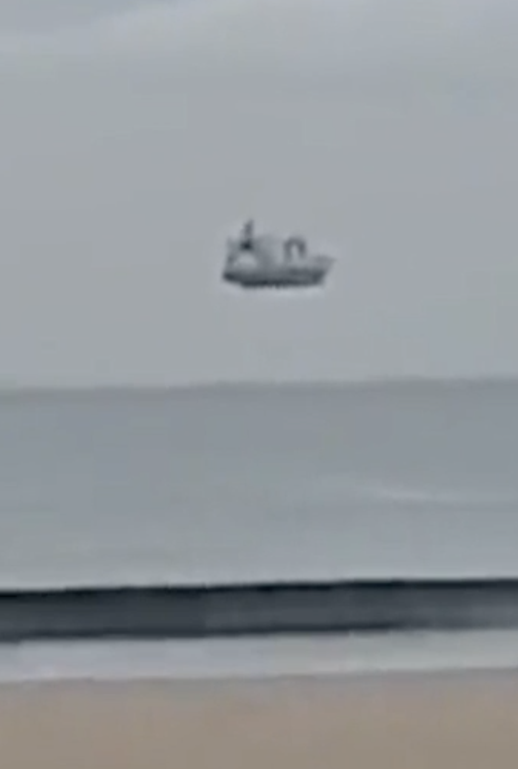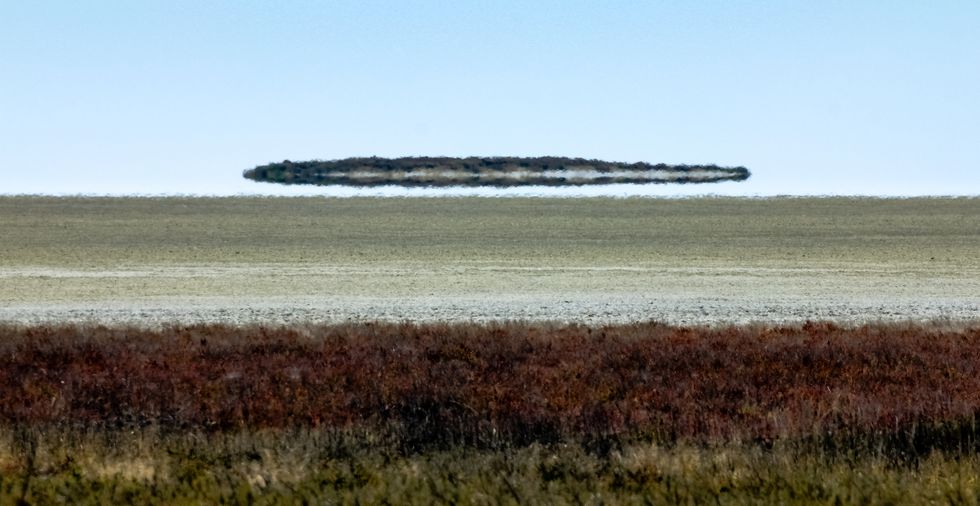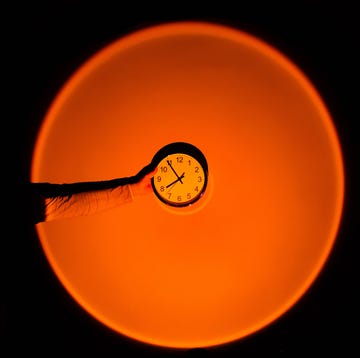- A UFO-like fata morgana has captured the internet's imagination.
- Mirages near the horizon are usually caused by a compressed view of layers of air.
- Fata morganas are among the most dramatic mirages, appearing as freefloating islands or ships.
A viral roadside photograph from a puzzled New Zealand resident shows a kind of optical phenomenon called a fata morgana.
What’s going on here? A ship appears to hover in the air just above the horizon. But that’s already a clue, because the narrow band around the horizon is home to some wild optical illusions.
The sun appears to squash into an oval or even into discrete rectangular bands. The moon looks notably larger than at other positions in the sky. Sometimes, you can still see a ship that has dipped below the horizon.
Here’s where some keen-eyed (and pedantic) people are sitting up in their chairs and saying, “These are phenomena, not illusions.” They’re not wrong! An optical illusion is something like the Hermann grid, where our eyes imagine and “see” something that truly isn’t there. An optical phenomenon is just something surprising that's indeed actually happening.
You could never take a picture of your experience of viewing the Hermann grid, but you can photograph a mirage or a fata morgana. (The moon illusion really is an illusion, with no measurable change in visible size at the horizon.) From true optical illusions like the Hermann grid, we can note and reflect on the idea that our brains are communicating incomplete information to us—a lesson that’s humbling in a good way.
But optical phenomena may fill us with awe or even fear because of how alien they appear. Sometimes that’s literally alien, because fata morgana could pass for a flying saucer to someone in the right frame of mind. Let’s look at what causes this startling phenomenon. It’s a combination of two other phenomena called superior and inferior mirage.
The optical phenomenon where you still see a ship that has traveled beyond the horizon is called a superior image, where you see as though from a higher position than you really have. A layer of warm air sits above a layer of cold air, and the difference bends light into your field of vision. It’s like having one of those round convenience store mirrors, and in the mirror you see the faraway ship.
Inferior mirage is the natural opposite. Cold air sits on top of warm air, and this bends the light downward. When you drive on a hot day and see mirage “puddles” on the pavement, that’s basically a repeated image of the sky that’s bent into a visible spot on the ground. It only looks like liquid because of the context: The sky isn’t on the ground, the same way the wavy sunset never looks like it’s really water.
A fata morgana is a layer cake of both kinds of optical phenomena. Alternating bands of hot and cold air create several different bands where superior and inferior mirages meet. The effect is kind of like a rolling shutter photo, or the illusion collage where you cut strips of two photos and then alternate them.
Looking at these images feels confusing because of the way context is changed and removed—but nothing out of this world is going on at all.

Caroline Delbert is a writer, avid reader, and contributing editor at Pop Mech. She's also an enthusiast of just about everything. Her favorite topics include nuclear energy, cosmology, math of everyday things, and the philosophy of it all.














